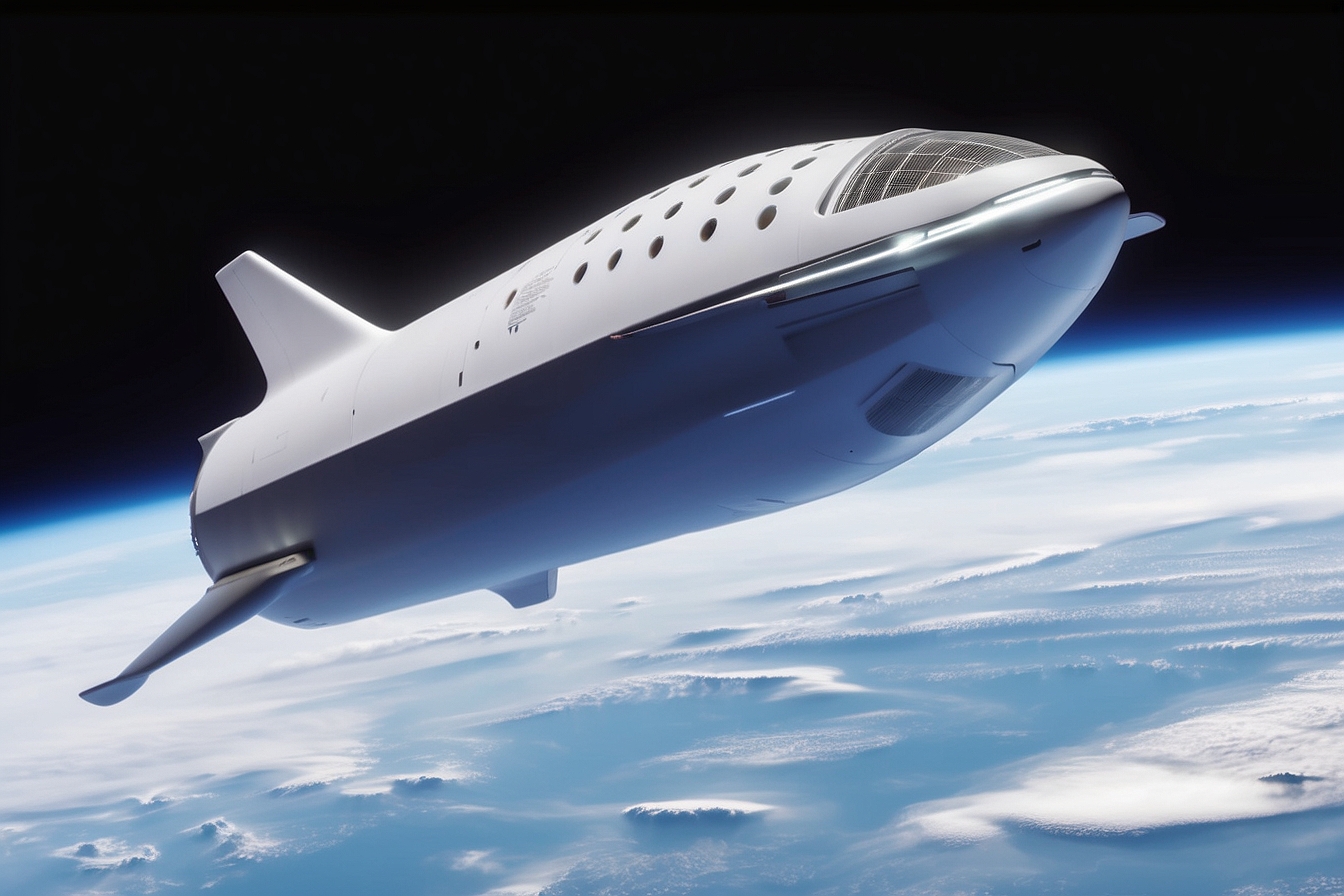
SpaceX’s Starship upper stages, capable of one-hour cargo flights between continents, could revolutionize global logistics by drastically reducing delivery times compared to the 12-24 hours typical of traditional air cargo. However, to fully capitalize on this speed, bureaucratic and procedural delays—such as customs clearance, security checks, and documentation—must be minimized. By implementing expedited pre-approval processes and know-your-customer (KYC) systems, logistics providers like FedEx and UPS could integrate these ultra-fast flights into their existing networks, potentially enabling next-day delivery for intercontinental shipments at scale. Below, I’ll outline how this could work, including examples of processes to streamline operations and how one-hour flights could mesh with regional sorting systems.
Expedited and Pre-Approval Processes to Avoid Bureaucratic Delays
To ensure that one-hour flight times translate into meaningful delivery improvements, logistics systems must address the procedural bottlenecks that often delay cargo. Here are examples of expedited and pre-approval processes that could enable rapid delivery:
Know-Your-Customer (KYC) Systems
By verifying the identities and compliance histories of senders and receivers in advance, logistics providers could pre-clear shipments from trusted parties. For instance, a company with a consistent record of compliant shipments could be designated a “trusted shipper,” allowing its cargo to bypass many standard checks. This mirrors programs like the U.S. Customs Service’s CTPAT (Customs-Trade Partnership Against Terrorism), which expedites clearance for verified businesses.
Pre-Cleared Cargo Programs
Similar to TSA PreCheck for air travelers, a system could allow pre-approved cargo to move through customs and security with minimal scrutiny. For example, high-volume shippers could submit shipment details (e.g., contents, origin, destination) ahead of time, receiving pre-approval that reduces processing to mere minutes upon arrival.
Blockchain-Based Verification
A decentralized ledger could securely track and verify cargo details in real time, accessible to customs authorities worldwide. This would eliminate manual paperwork delays. For instance, a shipment from Los Angeles to Paris could have its blockchain record checked instantly upon landing, confirming its pre-approved status and allowing immediate sorting.
These systems would ensure that the one-hour flight advantage isn’t eroded by hours—or days—of ground delays, making rapid global delivery feasible.
Integrating One-Hour Flights with Regional Next-Day Delivery
To transform one-hour intercontinental flights into next-day delivery, Starship operations must integrate seamlessly with the regional sorting and distribution networks of companies like FedEx and UPS.
Here’s how this could work at scale
Strategic Hub Network
With 20-40 Starship launch and landing sites globally—covering regions like central USA, West USA, East USA, Europe, and Asia—Starship could create a network of high-speed cargo routes. For example, flights could connect Los Angeles to a European hub (e.g., Frankfurt), central USA (e.g., Chicago) to Asia (e.g., Shanghai), and Asia to Europe. Ten daily flights per route would provide frequent, reliable service.
High-Efficiency Sorting Centers
Each Starship landing site would need advanced sorting facilities to process cargo quickly. Drawing from FedEx’s Memphis superhub, which handles 3.3 million packages daily with automated systems, these centers could use robotics and conveyor systems to sort Starship’s large payloads (potentially 100+ tons) within hours. For instance, cargo arriving in Frankfurt could be sorted and dispatched to local delivery networks across Europe by morning.
Seamless Handoff to Local Networks
After sorting, cargo would transfer to existing regional delivery systems (e.g., FedEx Ground or UPS’s local fleets) for final delivery. A package flown from Chicago to Shanghai in one hour could be sorted overnight and delivered locally the next day, shaving 12-24 hours off current air cargo timelines.
This hub-and-spoke model leverages Starship for ultra-fast long-haul transport while relying on established ground networks for the “last mile,” enabling next-day intercontinental delivery.
Scaling to 10 Daily Flights Across 20-40 Launch Areas
Operating 10 daily flights between 20-40 Starship sites is ambitious but feasible with the right infrastructure and technology.
Reusability and Turnaround
Starship’s design emphasizes rapid reusability, much like SpaceX’s Falcon 9, which has achieved same-day reflight. With streamlined refueling and maintenance, 10 flights per day per route could support a continuous flow of cargo between continents.
Infrastructure Requirements
Each launch area would need Mechazilla launch towers and sorting facilities. There also could be large drones for shuttling ultra-urgent packages. Robo-trucking (Semi trucks with self driving) could increase the safe driving speeds to 120 mph (200 kph). There would need to be highways where it would be autonomous driving only to enable higher speeds like a robo-Autobahn.
A West USA site in California could handle flights to Asia and Europe, with automated systems processing incoming and outgoing cargo to maintain high throughput.
Time Savings:
Current air cargo from the USA to Europe takes 12-24 hours, including flight time (8-10 hours) and processing. A one-hour Starship flight, paired with pre-approval and efficient sorting, could reduce this to 3-5 hours total (1 hour flight + 2-4 hours processing and local delivery), enabling next-day service even for distant regions.
China has streamlined border and customs processes for high-speed rail passengers and cargo in Hong Kong and other places, ensuring that the speed efficiency of high-speed rail is not compromised by processing delays
At scale, this network could handle thousands of tons of cargo daily, transforming global logistics.
Starship flights may initially cost more than traditional air cargo, limiting use to high-value or time-sensitive goods (e.g., medical supplies, electronics). As reusability scales and costs drop, broader adoption could follow.
Space launches are tightly regulated, requiring new frameworks for frequent cargo flights. International agreements on customs and security for sub-orbital transported goods would also be needed.
Rocket launches have a higher carbon footprint than airplanes, though SpaceX’s reusable technology and potential sustainable fuels could mitigate this over time.
Starship’s large payload capacity demands advanced automation to sort cargo quickly, requiring significant upfront investment.
Fuel Costs
SpaceX aims to lower the cost of methane (CH₄) and liquid oxygen (LOX) for future Starship flights through a combination of innovative production methods, cost-saving strategies, and operational efficiencies. Additionally, producing these propellants onsite is not only feasible but a key part of their approach
1. Onsite Propellant Production
SpaceX can produce both CH₄ and LOX directly at or near their launch sites, eliminating the substantial costs associated with transporting large quantities of cryogenic liquids. By setting up production facilities onsite, they avoid the logistics expenses of tanker trucks or other transport methods, which would otherwise be significant given the thousands of tons of propellant required per launch.
Liquid Oxygen (LOX): LOX is produced by separating oxygen from the atmosphere and liquefying it, a process that can be powered onsite.
Methane (CH₄): Methane can be synthesized using the Sabatier reaction (CO₂ + 4H₂ → CH₄ + 2H₂O), which combines carbon dioxide (CO₂) and hydrogen (H₂). This reaction is already part of SpaceX’s plans for Mars, where it will use local CO₂, and can be adapted for Earth-based production.
2. Utilizing Renewable Energy
To reduce the energy costs of producing propellants, SpaceX can leverage renewable energy sources such as solar or wind power. By building solar farms or wind turbines near their launch sites—such as in Texas or Florida, where conditions may be favorable—they can generate electricity at a lower cost than traditional grid prices.
If electricity costs of $0.02–$0.03 per kWh can be reached with renewables, the energy-intensive processes like electrolysis (for hydrogen) and liquefaction (for CH₄ and LOX) become significantly cheaper, lowering the overall propellant production cost.
Technological Advancements
SpaceX is likely to refine the efficiency of key processes over time:
Improving electrolysis to reduce the energy required (currently 50–60 kWh per kg of H₂).
Enhancing the Sabatier reaction’s yield or operating conditions.
Optimizing liquefaction energy needs (approximately 0.5–0.6 kWh per kg for both CH₄ and LOX).
These advancements will incrementally decrease production costs as the technology matures.
Can They Produce It Onsite?
Yes, SpaceX can and likely will produce CH₄ and LOX onsite. The combination of electrolysis for oxygen and hydrogen, the Sabatier reaction for methane, and onsite liquefaction facilities makes this entirely practical. This approach not only reduces costs but also aligns with their Mars colonization goals, where onsite propellant production using local resources is essential. The same technologies can be adapted for Earth, leveraging abundant atmospheric oxygen and accessible CO₂.
Cost Reduction in PracticeIATA has jet fuel price tracking.


Conclusion
One-hour cargo flights via SpaceX’s Starship could integrate with FedEx and UPS networks to enable next-day intercontinental delivery by leveraging expedited pre-approval processes (e.g., KYC, blockchain) and advanced sorting at strategic hubs. With 10 daily flights across 20-40 global launch areas, this system could shave 12-24 hours off current delivery times, revolutionizing logistics for high-speed, high-value shipments. While challenges like cost, regulation, and infrastructure remain, the potential to transform global trade is possible.

Brian Wang is a Futurist Thought Leader and a popular Science blogger with 1 million readers per month. His blog Nextbigfuture.com is ranked #1 Science News Blog. It covers many disruptive technology and trends including Space, Robotics, Artificial Intelligence, Medicine, Anti-aging Biotechnology, and Nanotechnology.
Known for identifying cutting edge technologies, he is currently a Co-Founder of a startup and fundraiser for high potential early-stage companies. He is the Head of Research for Allocations for deep technology investments and an Angel Investor at Space Angels.
A frequent speaker at corporations, he has been a TEDx speaker, a Singularity University speaker and guest at numerous interviews for radio and podcasts. He is open to public speaking and advising engagements.









